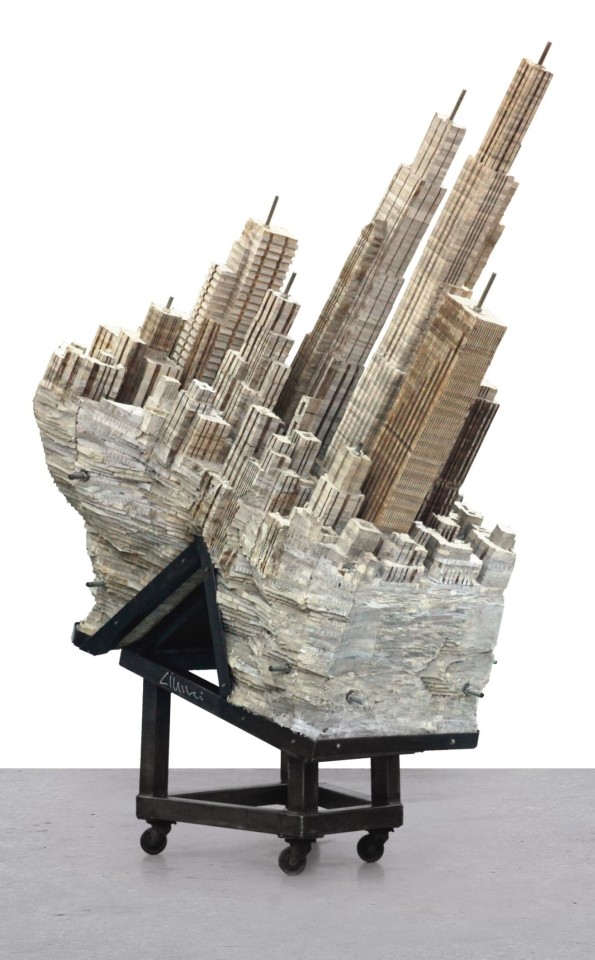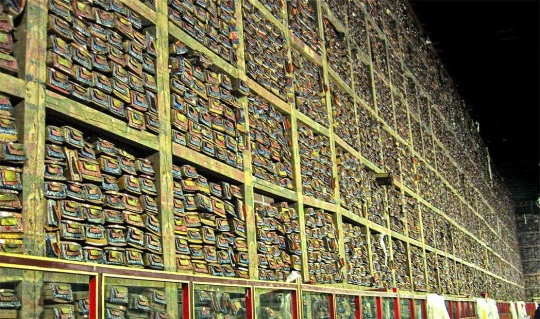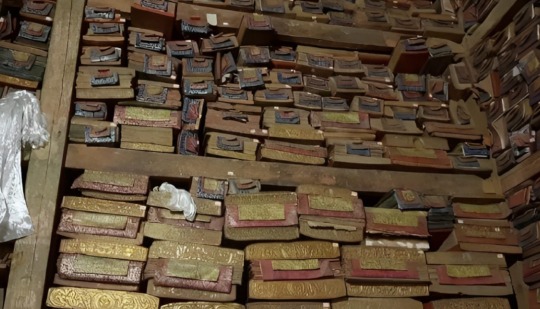#chinese libraries
Explore tagged Tumblr posts
Text
Libraries Around the World: Xi'an, China
In 627 CE, under the reign of Chinese emperor Tàizōng of Táng (Chinese: 唐太宗) we know a library was established which housed a whopping 54,000 rolls.
#libraries around the world#libraryland#librarylife#china#chinese libraries#Did You Know#library history#chinese history
2 notes
·
View notes
Text







Grand Canyon Bookstore, Nujiang, China - TAO (Trace Architecture Office)
#TAO (Trace Architecture Office)#architecture#design#building#modern architecture#interiors#minimal#concrete#modern#contemporary architecture#contemporary design#minimalist#cool design#beautiful buildings#amazing places#nature#views#mountains#landscape#lookout#book store#library#cafe#brutalist#angular#form#china#chinese architecture#shop#design blog
244 notes
·
View notes
Text
#video#paradise#view#nature#paraiso#natureza#explore#travel#trip#vacation#ai generated#house goals#houses on the mountains#raining#rainymood#rainyday#room#home#books#bookshelf#book and libraries#love#cozy#relaxing#architecture#asian#japan#korean#chinese
440 notes
·
View notes
Text









how I view you based on your favourite Disney princess 𐚁̸ ࣪ㅤ𓈒
mulan - jasmine flowers, koi ponds, wishing on lanterns, warriors
#disney#disney princess#mulan#chinese#aesthetic#asian#moodboard#pinterest#pinterest moodboard#aesthetic moodboard#reading#books#library#bookstore#academia#light academia#dark academia#classic academia#romantic academia#love#romance#li shang#study inspo#study inspiration#study motivation#inspo#beauty#photography#ulzzang#princess
108 notes
·
View notes
Text
The Adventures of Robin Hood (1938) is free on tubi. You're welcome.
#robin hood#the adventures of robin hood#which i got from the library because it wasn't streaming anywhere#then i lost my enthusiasm for robin hood#finally decided to watch it today#and it turned out to be a terrible chinese bootleg copy#in desperation i googled it again#and thankfully sometime in the past couple of weeks it became available#absolutely delightful
241 notes
·
View notes
Note
Just popping by to say that 'Wanyi' and your words for why it's a good name for Zuko's ship hit me like a sack of bricks to the chest. absolutely incredible choice, I am REELING.
I'm glad you found it so touching!
I haven’t read Embers. I thought MuffinLance intentionally named Zuko’s warship 萬一 (one in ten thousand, what if) from the start. It’s been a bit bewildering to see a mistake become new fanon.
At risk of ruining the sentimentality of the name Wanyi, I would issue a few caveats to people adopting it for their fics. It’s really more of a retrofit of the old name—something to rebrand while sounding and looking similar enough to Wani to not be distracting.
Wanyi is pinyin romanization, used in the People’s Republic of China. You could just as easily spell it Wan-i or Wani. Canon uses a mix of romanization methods. However, if the goal is rebranding, Wanyi makes sense.
Wanyi isn’t an Authentic™ historical Chinese boat name. That would be something like Galloping Clouds or Tranquil Seas.
You might want to use a different culture instead of Chinese for Zuko’s warship. Canonically, there are Fire Nation characters with Chinese inspired names, like Zhao, Piandao, and Shyu, but if your fan-fiction is drawing more inspiration from Japanese or Thai culture, maybe a different name is more suited.
Wanyi is often used for negative what-ifs. An unlikely disaster. Zuko is, after all, a disaster magnet. And the cause of many misfortunes.
Wanyi literally means one in ten thousand, but it is grammatically used to indicate an extremely unlikely possibility. Like finding the avatar. To me, it feels ominous, anxious, yearning in an unrealistic sort of way, which I think all speak to Zuko's character arc. Idk, what do other Chinese speakers think?
#atla#avatar the last airbender#Wanyi#Wani#Ten-thousand is used to just mean something is countlessly large#One vs ten thousand = one vs an inconceivably big number#aka near-impossible#The library spirit Wanshitong’s name is translated as “he who knows ten thousand things” but it also just means “he who knows everything.”#Yeah it’s not authentic but canon is pretty fast and loose with authenticity the forest is just named Senlin (Chinese for forest)
336 notes
·
View notes
Text

Liu Wei — Library IV (books, wood, board and iron, 2013)
185 notes
·
View notes
Text


This made me weirdly happy if only because the last time I drew Trunks (or any DBZ character for that matter) was waaaaaaaaaaay back in grade school where dragon ball was at peak influence for me (drawing the eyes was always the fun part, because my grasp of anatomy back then made anything I drew with muscles look inhuman).
Now that I find myself drawing a DBZ character again after the passing of Toriyama-sensei... it feels good knowing i'll get to do it justice this time around.
RIP, Toriyama-sensei. Thanks for the great childhood memories.
#i remember how the chinese library in school used to play tapes of episodes during recess/lunch#good times#bojack unbound is still my favorite dbz movie#my art#future trunks
191 notes
·
View notes
Text
⚠️ Newly Digitized Collection Alert: Chinese Newspapers

Chinese Newspapers were character based rather than letter based which was challenging for printers at the time. Early Chinese newspapers used lithography to solve this printing issue. Grease pencils on special stones were used to print the early publications.
Explore the collection online:
The Oriental, or Tang fan gong bao:
https://delivery.library.ca.gov:8443/delivery/DeliveryManagerServlet?dps_pid=IE326096
The Oriental, or Chung-hsi hui pao:
https://delivery.library.ca.gov:8443/delivery/DeliveryManagerServlet?dps_pid=IE326085
The Oriental, or Tung-ngai san-luk, 1855-1857:
https://delivery.library.ca.gov:8443/delivery/DeliveryManagerServlet?dps_pid=IE326066
San Francisco China News:
https://delivery.library.ca.gov:8443/delivery/DeliveryManagerServlet?dps_pid=IE326235
#newspapers#chinese language#chinese#chinese history#chinese-american#chinese newspapers#languages#history#libraries#librarians#digitization
62 notes
·
View notes
Text









Ningning, bookstores in China
#aespa#ningning#ning yizhuo#aespa ningning#aespa aesthetic#aespainc#aespa moodboard#kpop moodboard#libraries#library#libraries of china#china#chinese#books#Xi’an#Tomoko Ikegai#Zhongshuge#cat books#cat stores#aespanet#4aespa#ggnetwork#femaleidolsedit#femaleidol#femaleidols#kgoddesses#Chongqing#bookstore#she's in a korean bookstore here but it's as close as I'll get 😭
23 notes
·
View notes
Text


If you are still heart broken about the destruction of the Alexandria library, you will be happy to hear in a far away world, there’s a vast library hidden from the world for centuries, contains 84,000 books, which are planned to be digitised, translated and share with the world.
The Sakya Monastery in Tibet, founded in 1073 by Khon Konchog Gyalpo, is renowned for its vast library of ancient manuscripts, many of which remain untouched for centuries.
Most of these texts are Buddhist scriptures, meticulously handwritten in various languages like Chinese, Tibetan, Mongolian, and Sanskrit. But the depth of this collection is vast. It isn’t limited to religious teachings; it expands into the realms of literature, history, philosophy, the stars above with astronomy, the logic of mathematics, the beauty of art, and even the practical wisdom of agriculture.
The scale of this library is staggering. Picture traditional bookshelves stretching 200 feet and soaring to 33 feet, all packed with a whopping 84,000 books! Among these, there’s a standout: a single scripture that tips the scales at a massive 1,100 pounds, claiming the title of the heaviest in the world. Thanks to the region’s dry climate, the library also boasts a collection of delicate palm-leaf manuscripts, preserved in near-perfect condition.
The library is not open to the general public but is accessible to members and visiting scholars with permission. Efforts are underway to digitize these manuscripts, making them more widely available for research and study. This initiative highlights the library's role as a bridge between ancient wisdom and modern scholarship, offering invaluable insights into Tibetan culture and knowledge.
Now, these precious papers give us a peek into Tibet’s history. They show us how people lived, what they believed, and how they dreamed. Thanks to the Sakya Monastery, a whole world has been brought back to life from long ago. Everyone can learn and be amazed by the wonders of the past.
[Sources]:
*Earthly Mission: Tibet's Great Sakya Library (https://earthlymission.com/tibet-great-sakya-library-84000-scrolls-heaviest-scripture-world/)
*History Enhanced: Unveiling the Unseen (https://historyenhanced.com/unveiling-the-unseen-84000-unread-manuscripts-from-sakya-librarys-timeless-tales-discovered/)
*The Historians: The Secrets of Sakya Monastery Library (https://thehistorians.org/2023/12/24/the_secrets_of_sakya_monastery_library_in_tibet/)




#Tibet#Sakya Monastery#Khon Konchog Gyalpo#Ancient manuscripts#Buddhist scriptures#Mongolian#Sanskrit#Chinese#Tibetan#Religious Teachings#Arts#ancient literature#ancient history#ancient philosophy#astronomy#ancient agriculture#ancient wisdom#ancient library#heaviest book in the world
31 notes
·
View notes
Text
whenever i hear people talking about tian guan ci fu it’s all stuff like “the greatest love story ever told 🥺” “xie lian suffered so much but he’s still so infinitely kind 🥺” which is how my mom talks about the bible. and i’m sure it’s a fine book, but there’s just not enough gravy in the pitch for me to invest in something of that scale. after all, there are so many greatest love stories ever told, but very few stories have, for instance, whatever the hell guan yu and cao cao had going on
#part of it is just optics obviously#everything i heard about erha before i started was like ‘i love a classic tale of love at sixth or seventh car crash. maybe eighth.’#which got my interest AND my attention#but part of it is just that tgcf seems to primarily resonate with people who interact with literature very differently from me#and have different priorities in a story#which suggests that it shall not resonate as much with me#which is a shame because it’s one of very few chinese books at my local library#ryddles
24 notes
·
View notes
Text






Book 530
The Embodied Image: Chinese Calligraphy from the John B. Elliot Collection
Robert E. Harrist, Jr. and Wen C. Fong, et al.
The Art Museum, Princeton University / Harry N. Abrams, Inc. 1999
Published to accompany a traveling exhibit between 1999-2001, this book presents highlights from Princeton University’s John B. Elliot Collection, one of the most comprehensive collections of Chinese calligraphy outside of Asia. With works dating from the fourth through the twentieth centuries, the collection illustrates the extraordinary variety of formats and styles that makes shu-fa—“the way of writing”—so visually stunning. Arguing, through presentation and nine scholarly essays, that calligraphy is integral to Chinese culture, this is a beautifully organized and composed book, filled with nearly 500 images to enrich the soul.
#bookshelf#personal collection#personal library#books#library#bibliophile#book lover#illustrated book#booklr#chinese art#calligraphy#art#the embodied image#the art museum Princeton university#abrams books#robert e harrist jr#wen c fong
17 notes
·
View notes
Text

Liu Wei — Library V (books, wood, board and iron, 2013)
121 notes
·
View notes
Text
currently vibrating at such a high frequency that I'm about to shift into a different plane of existence, because I'm going to the library to browse the religion section and then find a good spot to sit and read and take notes
#my posts#and then I'm gonna have lunch at my fav Chinese bakery#and then go BACK TO THE LIBRARY#unless I wanna go home and watch a movie instead#ahhhhh I love having a day to myself like this
11 notes
·
View notes
Text
Tiny #elephant alert! 🐘



Amitabha Sutra (Discourse on the Land of Bliss), China, c.1775
The Morgan Library & Museum MS W.69
“PAINTED ON A BODHI LEAF
The Buddha achieved enlightenment beneath a tree with large, spade-shaped leaves. Revered by Buddhists, these trees became known as bodhi (or "enlightenment") trees and were propagated throughout Asia. In China, artists used bodhi leaves to create paintings for albums like this one, thereby infusing their images with sacred power. Written in gold ink against a deep blue background, this Buddhist sutra, or scripture, describes the wonders of Sukhavati, or the Land of Bliss, an uncorrupted realm inhabited by enlightened beings. One such being is depicted here accompanied by a diminutive elephant. The brightly painted bodhi leaf was pasted into a section of cutout paper and framed with yellow silk brocade.”
#animals in art#museum visit#manuscript#illuminated manuscript#miniature painting#painting#leaf painting#elephant#bohdi#Chinese art#Buddhist art#East Asian art#Asian art#18th century art#Morgan Library
31 notes
·
View notes